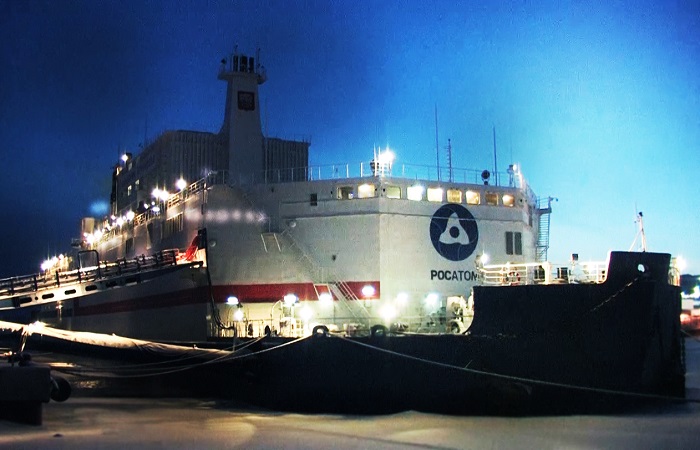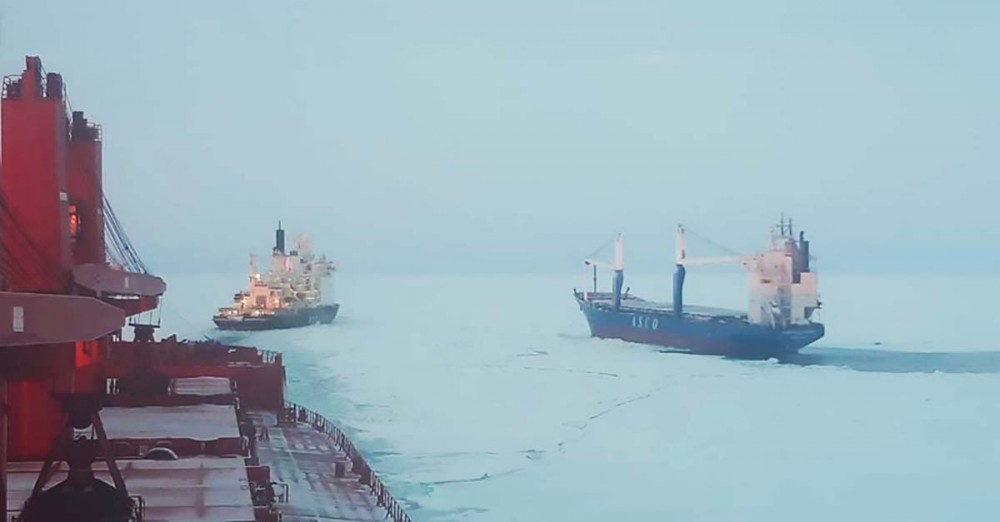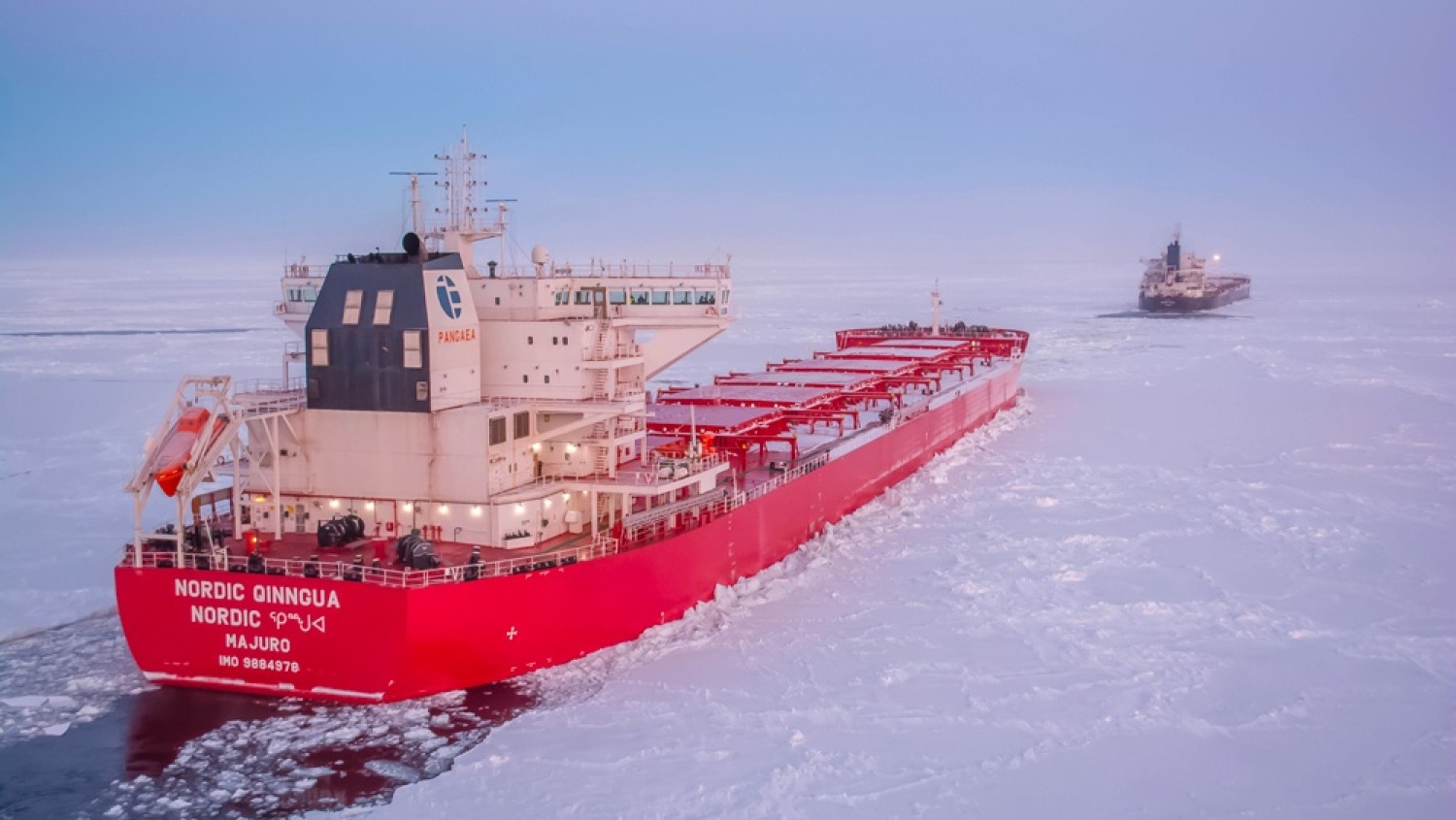Ice-locked arctic cities may not be getting the supplies they need
The rapidly accumulating sea ice on the North Sea Route creates a potentially critical situation along Russia’s East Arctic coast. Several ships have been trapped in the thick sea ice for several weeks.
Several ships have also been waiting to sail into the area. For many days the Tiksi, Yamal Ibris, I. Trubin, Polar King and Arshenewsky were stationed in the Kara Sea, waiting for icebreaker support to their destinations. On board the ships were thousands of tons of equipment needed by local authorities and businesses in the Chukotka region.
However, none of the ships will reach their destination. In mid-November they all turned west again and are now on their way to Arkhangelsk, where the cargo will be unloaded.
According to the regional authorities in Chukotka, a replacement will arrive in early January when the nuclear-powered container ship Sevmorput takes the cargo to its destination.
The nuclear powered container ship Sevmorput will help deliver goods to cities on the Arctic east coast. Photo: Rosatomflot
The Chukotka government said the deal was made at a meeting with Rosatom.
ADVERTISING
The difficult situation in the region has reportedly been discussed at a high federal level. Without the supplies, the remote societies could find themselves in a crisis.
On board the ships going from Arkhangelsk to Chukotka were many building materials for several large industrial projects in the region, including the Baimsky ore processing project and the Kekura gold project. The ships also carry material for the new power line between Pevek and Bilibino and the new runway at Pevek Airport.
In addition, the five ships also carry consumer goods for the local population, regional governor Roman Kopek announced on his Instagram page.
The ships were also reportedly carrying equipment for the Akademik Lomonosov nuclear power plant in Pevek.
 The “Akademik Lomonosov” is located on a specially constructed pier in Pevek. Photo: Rosatom
The “Akademik Lomonosov” is located on a specially constructed pier in Pevek. Photo: Rosatom
The remote Chukotka region relies entirely on shipments.
The shippers were surprised by the complicated ice conditions on the Russian Arctic shipping route. The waters along the eastern parts of the sea route were already covered with ice at the end of October, several weeks earlier than normal. In early November it was almost impossible to cross the area without the help of a powerful icebreaker.
Ships that have spent the past few weeks in ice fishing include the Finnish bulk carrier Kumpula, which left the Korean port of Busan on October 28 and was scheduled to enter Skagen, Denmark on November 22. The 197-meter-long ship with the Arc4 ice class sailed through the Bering Strait and into the Chukotka Sea at the beginning of November, from where it was escorted into the East Siberian Sea by the atomic icebreaker Vaigach.
 The Kumpula in icy waters. Photo: ESL Versand
The Kumpula in icy waters. Photo: ESL Versand
The Vaigach escorted Kumpula together with the oil tanker Vladimir Rusanov and the cargo ships Selenga and Severnyi Proect to a place north of the New Siberian Islands, where the ships were abandoned. The icebreaker then sailed to rescue other ships in the area.
These included the bulk carriers UHL Vision, Golden Suek, Golden Pearl, Nordic Quinngua and Nordic Nuluujaak. These ships were brought into ice-free waters in the Chukotka Sea on November 20, announced the Rosatom nuclear power plant.
 The Nordic Quinngua escorted from the East Siberian Sea. Photo: Rosatom
The Nordic Quinngua escorted from the East Siberian Sea. Photo: Rosatom
Then the Vaigach set course for Pevek, where she took over the escort of three cargo ships. The convoy sailed north of the New Siberian Islands on November 24th.
Meanwhile, the Kumpula and the other three ships have to wait a few days in the pitch black polar night before they are rescued.
The shipping company ESL Shipping did not respond to a request for comment on this story.
According to Rosatom, the nuclear icebreaker 50 Let Pobedy will come to the rescue at the beginning of December and shortly afterwards the brand new Arktika will be ready for use in the region.
Rosatom currently has three icebreakers in operation in the region. While the Vaygach is busy escorting ships from the East Siberian Sea, the Taymyr breaks the ice in the Gulf of Yenisei and the Jamal in the Gulf of Ob.
In addition, the diesel-powered Novorossiisk breaks the ice in the Chukotka Sea.



Comments are closed.